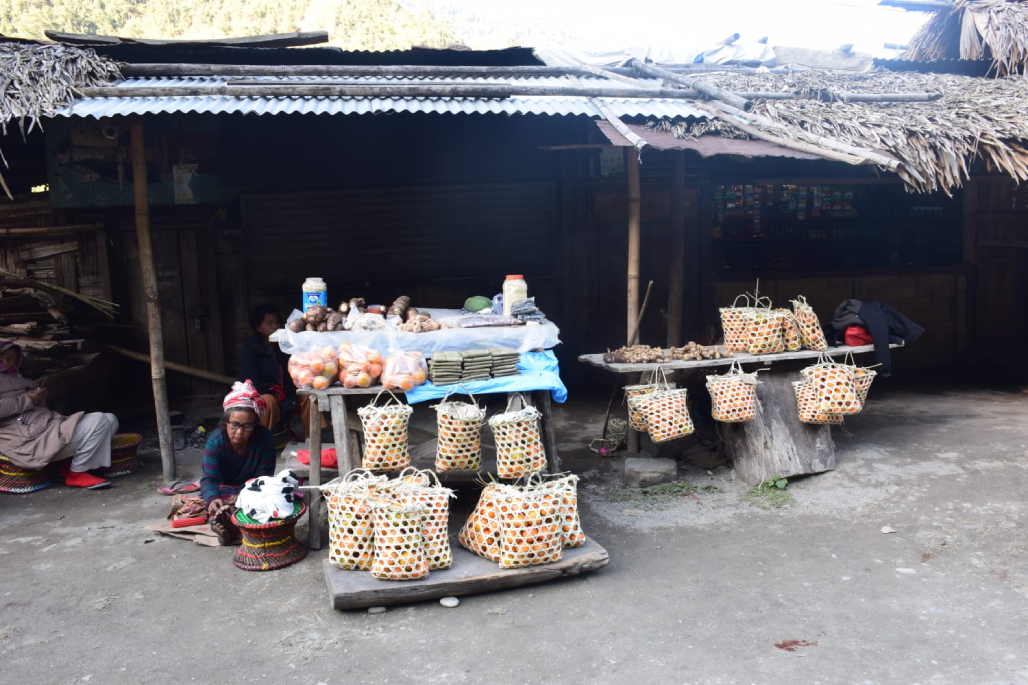Nestled in the picturesque mountains of Siang district in Arunachal Pradesh, Pangin is witnessing a quiet yet significant agricultural transformation. In a region where farming traditionally relied on jhum cultivation (slash-and-burn), a new method is slowly taking root—terrace cultivation.
Farmers are innovating by utilizing mountainous stream water to irrigate their lands, shifting from the unsustainable practice of jhum to a more productive and soil-friendly approach.
The Shift from Jhum to Terrace Cultivation
Jhum cultivation, though widespread in the hilly areas of the Northeast, often leads to soil degradation due to the constant clearing of land and burning.
Recognizing the adverse effects on soil fertility, the farmers of Pangin have started to adopt low-land farming techniques.
Instead of farming on the highlands, farmers now channel stream water into their farmlands through a traditional irrigation method—terrace cultivation. By building terraces along the slopes and diverting water from nearby streams, they’ve managed to create a sustainable system of agriculture.

According to Joy Bagra, a block coordinator with ASRLM (Arunachal State Rural Livelihoods Mission), this transition is proving successful. “In the past, people depended heavily on jhum, but with the introduction of water channels from streams, farmers now find terrace cultivation more sustainable and fruitful,” he said. The experiment is yielding positive results, with farmers noticing improved crop yields and better soil retention.
The process of terrace cultivation in Pangin
The transition began in early June, with farmers preparing their fields for the monsoon planting season. In the first week of June, they create nursery seedbeds, where paddy seedlings are nurtured for 21 days. By early July, the seedlings are transplanted into the terrace fields, meticulously prepared through primary and secondary tillage.
Primary tillage begins in mid-June, where jungles are uprooted using traditional hand plows. Secondary tillage involves preparing the seedbed, ensuring the soil is structured and leveled to retain water.
Water from nearby streams is diverted into the fields, ensuring adequate moisture for cultivation even during the rain-fed season. Once the fields are flooded, farmers plant paddy at a depth of no more than four centimetres to ensure optimal growth.
Water management: From streams to fields
Water management is at the heart of this farming transformation. Pangin’s natural topography, rich with streams and rivers, offers an excellent source of irrigation for terrace cultivation. Farmers have developed canal systems to divert water into their fields, allowing them to irrigate large areas with minimal resources.

Additionally, under the Jal Jeevan Mission (JJM), water from catchment areas is collected in primary and secondary tanks, ensuring a consistent water supply even during the dry season.As a result, Pangin’s farmers, who once struggled with jhum cultivation, now reap the benefits of a well-irrigated and fertile land. Each household earns an average of Rs 2 lakh annually, with over 10,000 square kilometres of farmland now under terrace cultivation producing orange and paddy.
Mahila Kisan Shashaktikaran Pariyojana: Empowering women farmers
A key element of this revolution has been the Mahila Kisan Shashaktikaran Pariyojana (MKSP), a program aimed at empowering women farmers in the region. Through micro-credit initiatives and support from Self-Help Groups (SHGs), the women of Pangin have taken the lead in orange cultivation. With over 500 saplings planted, yielding approximately 15,000 fruits annually, this initiative has provided much-needed economic support for local households.

A sustainable future for Pangin
The success of this quiet revolution lies in its ability to blend traditional knowledge with modern techniques. By using local resources—water, land, and labour—Pangin’s farmers have devised a system that sustains both the land and their livelihoods. As more villages embrace terrace cultivation, the once fragile agricultural system of this mountainous region is becoming a model for sustainability. The shift from jhum to terrace farming is not only preserving the land but also building stronger communities reliant on shared resources.
With 13 villages in Pangin dependent on agriculture, this farming revolution is a testament to the resilience and adaptability of Arunachal Pradesh’s people. The region’s farmers have shown that by working together and harnessing natural resources, they can overcome the limitations of traditional practices and secure a more prosperous future.







